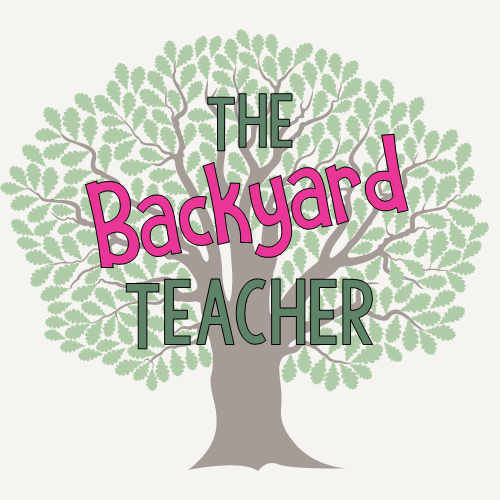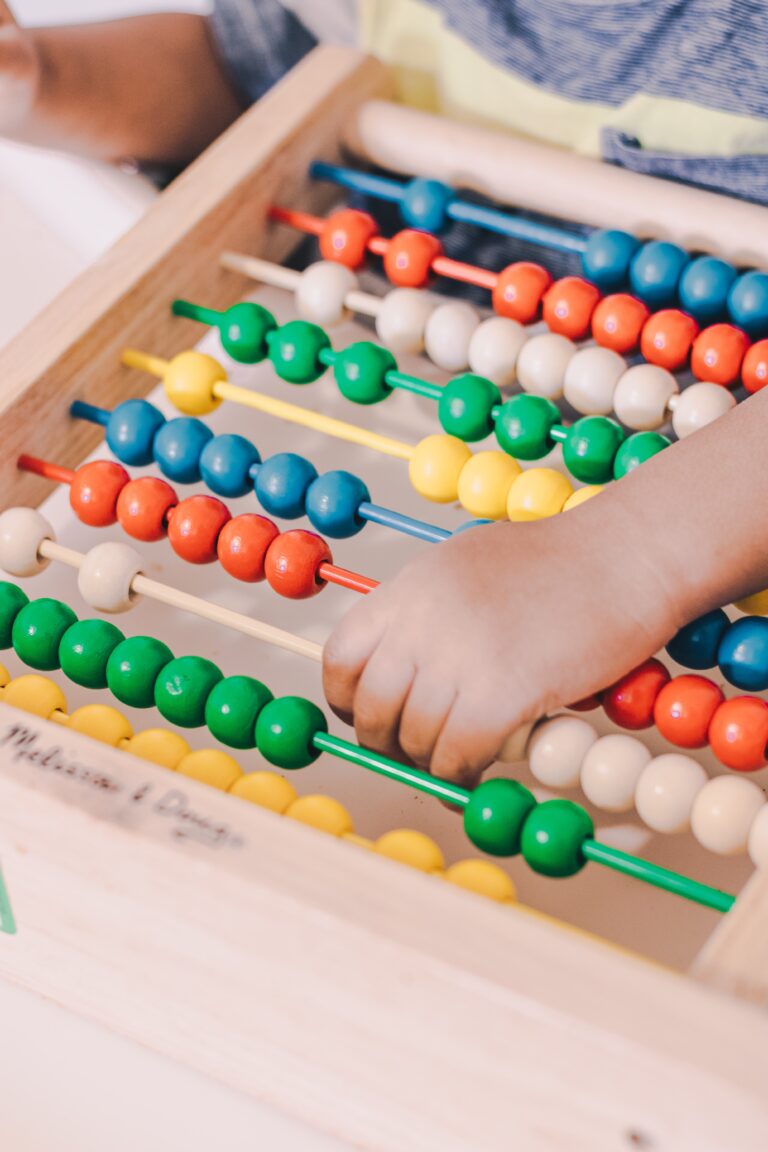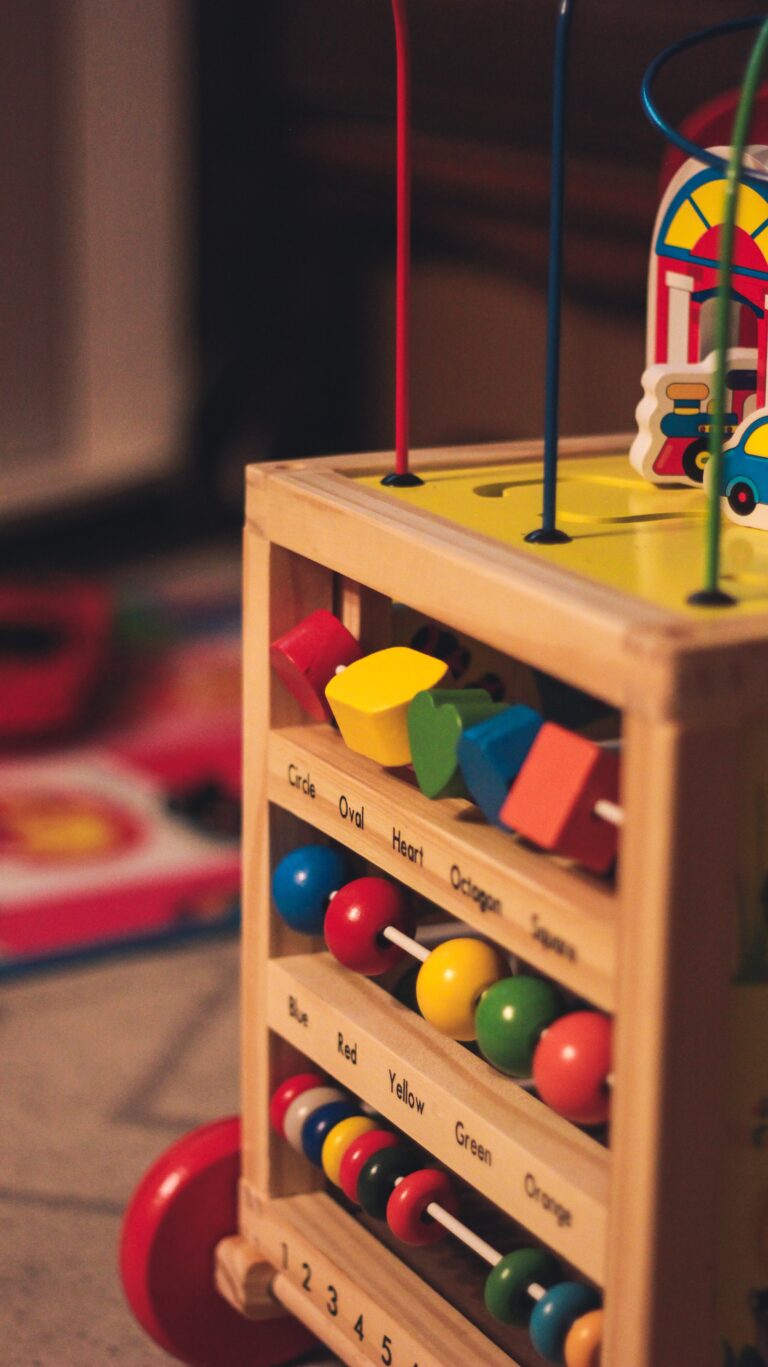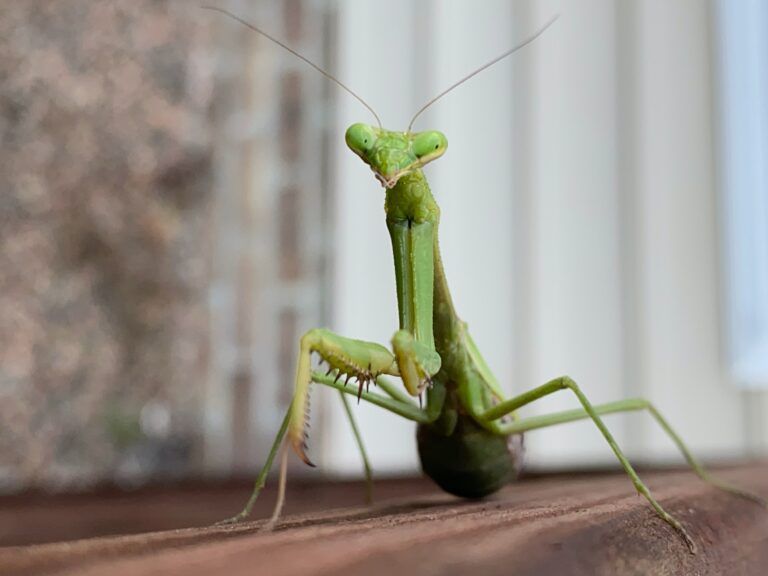Cutting-Edge Learning: A Fun Approach to Learning Scissor Skills in Pre-K and Kindergarten

Let’s talk about the magic of learning scissor skills! You’ve probably never thought of learning to use scissors in quite those terms before, but it’s genuinely magical for children’s brains!
What’s the big deal with learning to use scissors?
In the realm of early childhood education, we understand that every snip, tear, and cut holds the potential for both fun and essential skill-building. But, do you really understand how much brain development happens in the process of learning scissor skills?
How does learning scissor skills benefit kids?
Learning to use scissors not only enhances fine motor skills but also plays a vital role in brain development during early childhood education. Here’s how:
Fine Motor Skills: When a child holds and operates scissors, it requires precise coordination between the fingers, hands, and eyes. Learning scissor skills is like a workout for these muscles, helping to strengthen them and improve dexterity.
Hand-Eye Coordination: Scissor use demands a keen connection between the hands and the eyes. As children cut along lines or shapes, they learn to visually guide their hand movements. This enhances their hand-eye coordination, a critical skill for various tasks, including handwriting and drawing.
Spatial Awareness: While learning scissor skills, children become more aware of space and spatial relationships. They learn to judge distances, angles, and shapes. This skill is fundamental in various subjects, including mathematics.
Bilateral Coordination: Using scissors also encourages bilateral coordination, where both hands work together but perform different tasks. This promotes brain development by stimulating the brain’s hemispheres and fostering connections between them.
Cognitive Skills: Cutting involves cognitive skills like sequencing (cutting along a line), visual-motor integration (aligning scissors with a specific point), and problem-solving (deciding where and how to cut). These skills are foundational for learning and development.
Focus and Patience: Learning to use scissors requires patience and concentration. Children need to stay engaged in the task to cut accurately, which enhances their ability to focus.
Creativity and Imagination: As children cut and create with scissors, they engage their creativity and imagination. This type of open-ended play encourages problem-solving, planning, and decision-making, all of which stimulate cognitive development.
Confidence and Independence: Successfully using scissors helps children build confidence in their abilities. This newfound independence in creative tasks contributes to positive self-esteem and cognitive growth.
Scissors are for more than just craft!
So, you can see that learning scissor skills in early childhood education is far more than a simple crafting activity. It’s a multifaceted tool that promotes cognitive development, fine-tunes motor skills, and encourages creativity. By engaging in scissor activities, small humans are not only crafting artwork but also sculpting their growing brains, one snip at a time.

In the world of small humans and their scissor adventures, it’s all about starting with baby steps. We don’t even start the process with scissors! There are several things that have to happen in kids’ brains well before they are ready to try and learn scissor skills.
Pre-Scissor Hand Skills: Tearing and More
Pre-scissor hand skills are crucial because they lay the foundation for mastering those scissors. Here’s the approximate sequence of scissor learning I like to follow:
The sequence of skill development
Tearing
Tearing paper is a prelude to learning scissor skills. It’s a fantastic way to build hand strength and coordination because it requires kids to coordinate both hands on a task. Model the process well, and give plenty of feedback to get their hands in the right spot and moving in opposite directions. I like to make big group collages at first because it encourages everyone to join in and feel confident to contribute with no pressure. The kids’ focus is on the artwork, not the important learning happening from their hands to their brains!
Ripping and Crumpling
Let kids rip paper into pieces and then crumple those pieces into balls. This not only helps with hand strength but also fine-tunes their hand-eye coordination. All that crepe paper we crumpled into tiny balls to make spring blossoms back in the day were actually really useful in developing our fine motor muscles…who knew?!

Tearing Along Lines
Once kids are comfortable tearing paper, introduce the concept of tearing along lines. You can draw lines for them to follow or use dotted lines as a guide. This is a great precursor to scissor skills.
Sensory Play
Tearing paper can be a sensory experience too. Kiddos can feel the texture of different types of paper – smooth, rough, glossy, or matte. Each type and thickness of paper requires different pressure from their fingertips, which helps add to those developing neural pathways so always add a wide range of paper and card types.
These pre-scissor hand skills are the stepping stones to mastering scissors. If you give your kids a chance to build their hand strength and coordination before introducing scissors, you can make the process so much easier and less frustrating for them later on.
Pre-Scissor Skill Development by Age
Here’s a rough developmental sequence of pre-scissor and scissor skills by age:
2-3 Years: Pre-Scissor Skills
At this age, children are just starting to develop their fine motor skills. They can start with basic pre-scissor activities like tearing paper into pieces. Encourage them to crumple paper into balls, which helps build hand strength. Tearing along lines might be challenging, but they can try with guidance.
3-4 Years: Pre-Scissor Skills
Children are getting more dexterous. They can improve their tearing skills and may attempt tearing along lines with supervision. Try activities like creating simple collages with torn paper. Introduce tweezers or small tongs for fine motor practice.
4-5 Years: Pre-Scissor Skills and Early Scissor Work
By age 4, children usually have better hand strength and control. They can tear paper with more precision and may enjoy making intricate collages. Start introducing safety rules and introduce them to child-safe scissors. Early scissor work involves simple snipping, cutting straight lines, and cutting shapes with supervision.
5-6 Years: Developing Scissor Skills
Children at this age can usually follow safety rules and are more capable with scissors. They can snip more precisely and cut along straight lines independently. Introduce shapes like circles, squares, and triangles for them to cut out. Encourage them to cut out pictures from magazines or printed sheets.
6-7 Years: Advancing Scissor Skills
By age 6 or 7, kids are typically more confident with scissors. They can cut along curved lines and more complex shapes. Challenge them with cutting wavy lines and intricate patterns. Free-form art projects with scissors are great for creativity.
Remember that these age ranges are approximate, and individual development varies.
Things to think about when kids are learning scissor skills
When it comes time to use scissors, here are a few hints and tips to make it easier –
Introducing Safety
Start by teaching kiddos about scissor safety. Emphasize how they should hold scissors, which hand is for cutting, and which one is for holding the paper. Safety first!
Scissor Familiarity
Get them acquainted with scissors. Let them explore, open and close them, and understand the basic mechanics. It’s like an exciting new toy for them.
Snipping Practice
Begin with simple snipping tasks. Straight lines, zigzags, and maybe even some curves on scrap paper. This helps them get used to the motion.
Fine Motor Skills
Don’t forget about strengthening their hand muscles in other ways as well. Activities like playdough, tearing paper, or using tweezers help develop their strength, stamina and coordination without even picking up the scissors! Have some of these activities available to your kids every single day.
Cutting Lines
Gradually progress to cutting along lines. You can draw lines for them to follow or use dotted lines for a bit of a challenge.
Shapes and Patterns
Once they’ve got the hang of cutting lines, move on to shapes like circles, squares, and triangles. They can even create their own paper art!
Cutting Out Pictures
Encourage them to cut out pictures from magazines or printables. This adds a creative element to scissor practice.
More Complex Cuts
As they get better, introduce more complex cutting tasks like spirals, wavy lines, or intricate patterns.
Remember to make learning scissor skills fun!
At the heart of my approach to teaching lies a deep belief in making learning fun. I think if kids are enjoying their learning, it sticks, so I try to make my centers and lessons as engaging as possible, while being educationally rigorous. I start with an educational outcome in mind then try and think of how I can make it fun and engaging for my small friends.
Of the many ways I’ve tried to make cutting practice fun, toppers like the ones below have really hit the mark with my pre-k kiddos. There are a few reasons why these have helped –
- My kids love the fun pictures
- The card top gives them something firm to hold while they cut with the other hand (or you can stick them to the edge of the table if they can’t quite manage coordinating both hands yet)
- The printed papers give them lines to follow
I have several scissor skills activities in my TPT store – you can find them by clicking the pictures below. Download the previews and see if you think your kids would enjoy them!

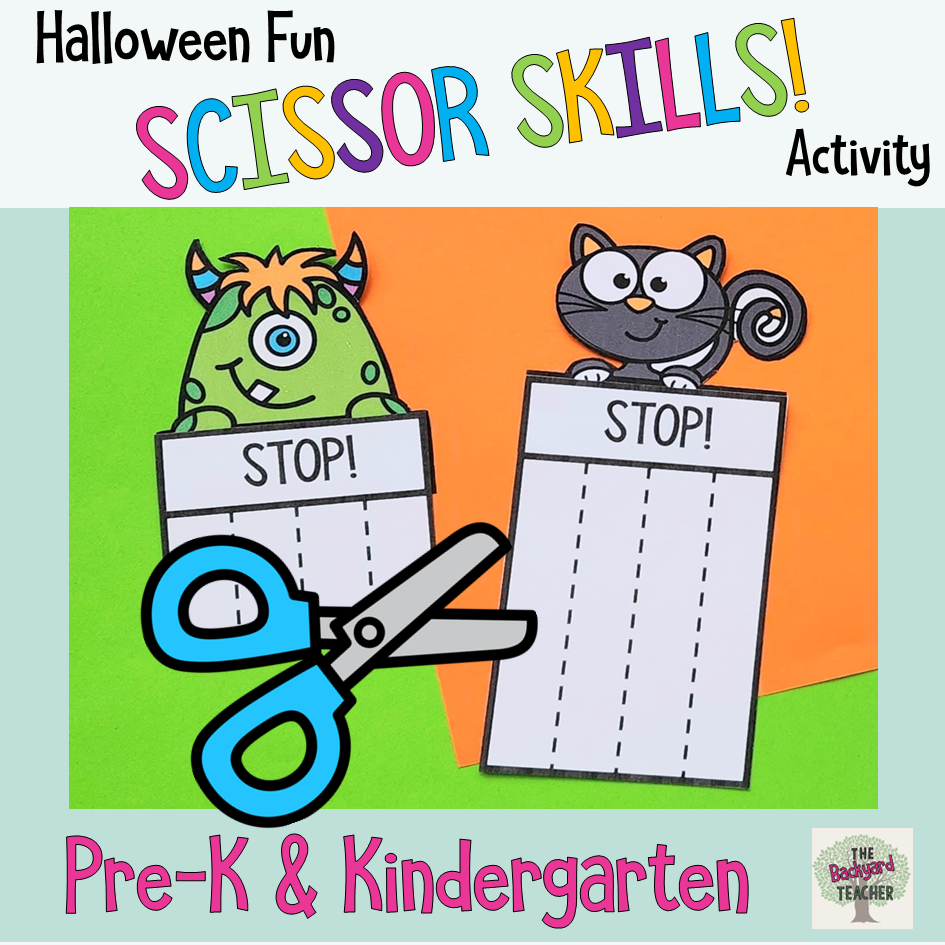
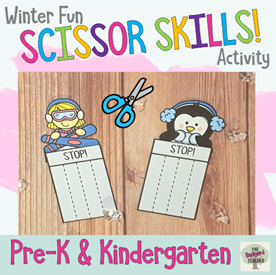
A heads-up – these scissor skills activities needs your help!
This activity can be a little teacher-time-intensive. It requires some preparation in advance of the lesson, and supervision during the lesson, but when our kids are working with scissors you really should be working with them anyway. When I use this activity, I pre-cut the cutting sheets and run a piece of tape across the top then stick just the corner to the desk where we’ll be working. That way, as the kids finish cutting each sheet it’s easy to pull it away and add a new one. It’s also a good way of keeping a record of their progress, because you can stick the cut sheets into their books. I pop mine into their portfolios for the year, and they surprisingly love looking back at their work – I frequently hear my crew say things like, ‘Look how I used to cut!’ as if they have since become experts!
Another really fun activity I’ve done with my kids is this Time for a Trim activity. The cute faces can be held or stuck to a container (see below where I’ve used an upturned plastic tray) and I’ve used this activity even with two-year-olds. It focuses on snipping rather than continuous cutting, and it’s a great first step after you get through the ripping and tearing phase.
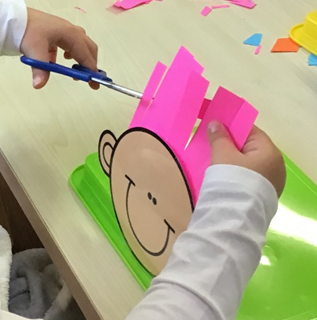
Again, you have to be prepared in advance, but it’s so much fun and so helpful that you won’t mind, I promise! If you would like this activity, you can snag it here for free – just click the image below and I’ll send it to you!
Good luck with your kids as they build their scissor skills, and as always, if you have a problem and want some advice, comment below and I’ll get back to you.

